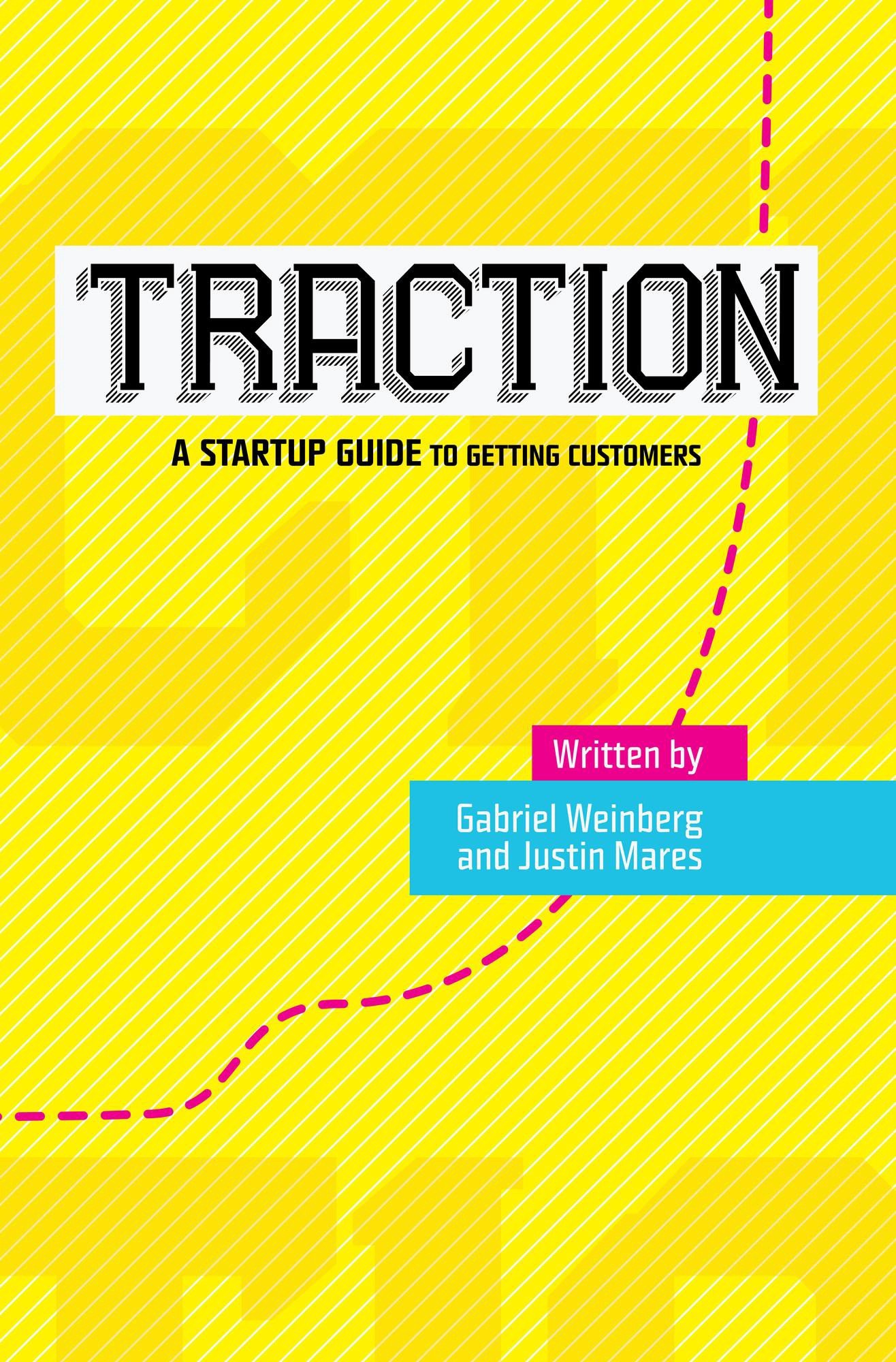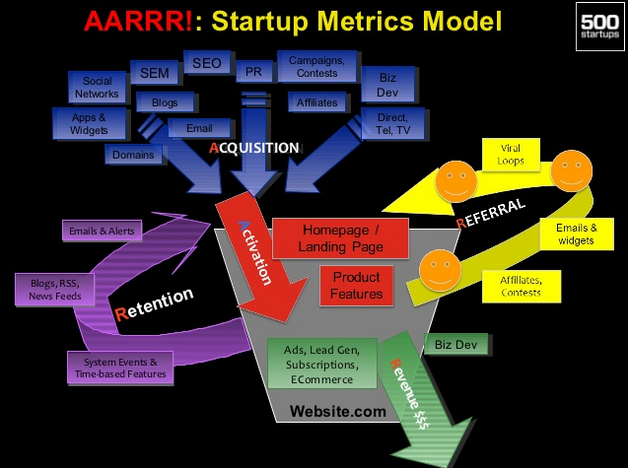How to Find Profitable Customers and Grow your Company: Customer Acquisition Cost
Note: Republishing this post I shared on the Medium paid subscription a few years ago. This was originally written in March 2015.
Two most Crucial Equations in Business
To look at a business in the most basic sense, take a look at the Unit Economics. That’s fancy-talk for ‘per customer.’ These two equations together determine whether a business will grow profitably or die:
How much does it cost a business to gain one individual customer?
How much does the business profit from that customer, in total?
The whole first half of that equation (tactics for gaining customers and associated costs) all fit under the scope of Customer Acquisition. That’s what we’ll look into in this Edition of Evergreen.
It’s worth keeping in mind that the profit-per-customer of this equation, referred to as Customer Lifetime Value (LTV) must be higher than the cost of Customer Acquisition (CAC) in order to have a sustainable business. Here is a link to the Edition of Evergreen on Customer Lifetime Value — an important companion to this piece.
Danger waiting after Product-Market Fit
Marc Andreesen’s beautiful post, ‘The Only Thing That Matters’ talks about lack of Product-Market fit as the problem that will kill most companies — and he’s absolutely right. But that’s just the first big obstacle…
Those companies that find Product-Market Fit are not out of the woods. This comes from ‘Startup Killer: Cost of Customer Acquisition’ post by David Skok:
Failure to get product/market fit right is very likely the number 1 cause of startup failure. However, I have not seen any discussion about what I believe is the second biggest cause of startup failure: the cost of acquiring customers turns out to be higher than expected, and exceeds the ability to monetize those customers.
The challenge ahead is finding a successful Customer Acquisition strategy, at a workable cost. We’ll get to more from this post later — it’s deep and thorough!
This post was suggested by Andrew Martin — great one, thanks Andrew!
First, Know your Target Customer
Before acquiring customers, it’s enormously beneficial to know who they are, where they can be found, and what they might appreciate about your product. Here’s how Roger Toor talks about the work that makes Customer Acquisition successful:
In my experience, companies who nail their product and acquisition were either lucky or had a deep insight into their customer’s minds (ex: Github in developer tools).
Hard work on customer development is a prerequisite for successful Customer Acquisition:
Once you know who your customer is and what exactly their pain point is, you shouldn’t have to work too hard to find out where (and when) they are when [the pain point you’re solving] manifests and is at its maximum.
Successful Customer Acquisition relies on many variables. Finding the right customers is important, addressing the right pain points is crucial, and it takes the right messaging to get the solution communicated. Roger points out another variable: time. The solution must be presented at the moment of the ‘peak pain point.’
Credit to Roger Toor for these ideas and these excerpts. Thanks Roger!
Early Customer Acquisition
The Customer Acquisition game changes significantly during a company’s growth. At first, the problem is to get one customer. Then, the challenge is to get the first 10, then 100. The mindset and tactics necessary for getting the first 100 customers are different than acquiring users at scale.
The First Customers of Airbnb and Stripe
Paul Graham, the friendly grandfather figure of YCombinator, has written an incredible post full of advice and stories about how to go about acquiring early customers in a startup, called Do Things That Don’t Scale:
The most common unscalable thing founders have to do at the start is to recruit users manually. Nearly all startups have to. You can’t wait for users to come to you. You have to go out and get them.
And once you have those users, keep them by keeping them happy:
You should take extraordinary measures not just to acquire users, but also to make them happy. For as long as they could (which turned out to be surprisingly long), Wufoo sent each new user a hand-written thank you note. Your first users should feel that signing up with you was one of the best choices they ever made.
Graham’s whole post is fantastic, full of anecdotes about the early days of giants-to-be, and the humble beginnings that they came from.
Plan The Attack
One of the challenges of Customer Acquisition is the huge range of possible channels, and tactics within them. It’s an overwhelming set of options to tackle, and a dangerous choice to make blindly. A book called Traction is a great map to making these challenging decisions.
Early in the book, it outlines The Bullseye Framework, a process designed to surface the most promising channels for any particular Customer Acquisition Challenge. This is a process that closely parallels Brian Balfour’s post, 5 Steps to Choose your Customer Acquisition Channel.
The meat of the book is where it breaks down 19 different channels, and offers some ideas to take on each one. The authors of Traction interview 40+ different founders, CEOs, and growth experts to understand how each channel was used successfully. The book is full of stories about how companies of various sizes and stages leveraged these channels into growth.
This book was recommended by both Derek Baynton AND David Spinks… so you know it’s good. Thanks guys!
The Transition of Traction -> Growth
Early in a company’s life, all it needs is ‘traction’—enough customers to prove that the business has an audience that is willing to pay for what they’re selling, essentially to prove product-market fit by doing things that don’t scale.
As those tactics become too unscalable to continue to hold up the required growth rate, companies must find other options. This is referred to as the Growth stage, where Customer Acquisition becomes about scale and efficiency, rather than an any-means-necessary scramble.
Brian Balfour (again), has a great post on this transition from Traction to Growth, and what it looks and feels like, which is summed up nicely in this graphic:
The Few Ways to Scale User Growth
Andrew Chen (if you haven’t heard of him) is a force in the Tech World. His set of Essays are some of the best thinking about product design and growth on the web. His post about Growth Channels is fantastic:
Scaling growth is hard — there’s only a few ways to do it. When you study the most successful mobile/web products, you start to see a pattern on how they grow. Turns out, there’s not too many ways to reach 100s of millions of users or revenue. Instead, products mostly have one or two major growth channels, which they optimize into perfection. These methods are commonplace and predictable.
That set of channels, according to Chen, are Paid Acquisition, Virality, SEO, Sales, and ‘Other.’ These differ from traction channels because of two things, Feedback Loops:
Each of these channels creates exponential growth because when you make money from customers, you can use that money to buy more customers, which give you more money. Or in the virality scenario, a cohort of new users will invite even more users, who then invite even more on top of that.
And they have a high ceiling on saturation:
The biggest ad networks reach a billion users or more. Similarly, SEO works because almost everyone uses Google, so as long as you’re dealing with a high-volume base of searches (like music lyrics, or products) then you’ll be able to reach hundreds of millions of users.
We’ll dig deeper into each of these channels in future Editions of Evergreen.
Variables of Customer Acquisition Cost
Customer Acquisition starts simple, and gets complicated quickly. Consider the number of channels that are active at any time, then the lagging effects of them, then that customers are often influenced by multiple channels. Now consider that customer value varies depending on the channel they came from. Complicated.
Fortunately, this wide range of variables affecting Customer Acquisition means that there are a lot of levers to pull that can improve the metric.
Most Customer Acquisition funnels have a designation for a ‘prospect’—someone who showed some interest in the product, whether or not they buy. That could be someone who walked into the store and didn’t buy, created an account on an e-commerce site, or is using a freemium feature.
Paying Customers are a fraction of this set of Prospects, and this is the ‘conversion rate’ of your audience. One huge lever to improve efficiency of your Customer Acquisition is to increase this conversion rate. Tactics that could be helpful in this are inside sales, special offers, etc.
This is what Dave McClure, in his Presentation Startup Metrics for Pirates calls the relationship between Acquisition and Activation:
Other toggles can be the increasing share of low-cost channels (SEO, Word-of-Mouth), or decreasing spend on higher-cost acquisition channels to bring down the average.
This is (half of) a graphic from David Skok’s post from earlier, Startup Killer: Cost of Customer Acquisition, that shows how using tactics can affect your customer acquisition cost, positively or negatively:
Plan ahead—knowing that you can acquire customers through some of these lower-cost channels can mean viability through growth challenges to come.
Threading the Needle
The challenges with Customer Acquisition are not just in the execution of the tactics, but the external pressures. It’s a function that must work in coordination with the rest of the business.
Lowering CAC is simple in a vacuum—eliminate spend on all but the lowest-cost channels, but that means you’ll be slowing growth. Overspend for growth, and your CAC shoots through the roof and your unit economics fall apart.
Mastering Customer Acquisition Cost comes from growing as much as possible, as cheaply as possible. Spending efficiently to test and eliminate channels early, and double-down on making effective channels improve.
Going Deeper on Customer Acquisition
If this is all the most exciting things you’ve ever read, and you realize the power the Customer Acquisition has to make or break a company and want to go deeper and become an expert, here are some further readings:
Start with Brian Balfour’s How to Become A Customer Acquisition Expert. There is a great primer here about what is/isn’t helpful to pursue, some books for background in psychology, and a great set of links categorized by channel to get you started.
Also, I’d recommend reading through Andrew Chen’s List of Essays. Anything related to Growth, Acquisition, or Traction is going to be helpful.
Checking out the Must-read section of Growth Hackers periodically will keep you on top of the new developments in the community.






